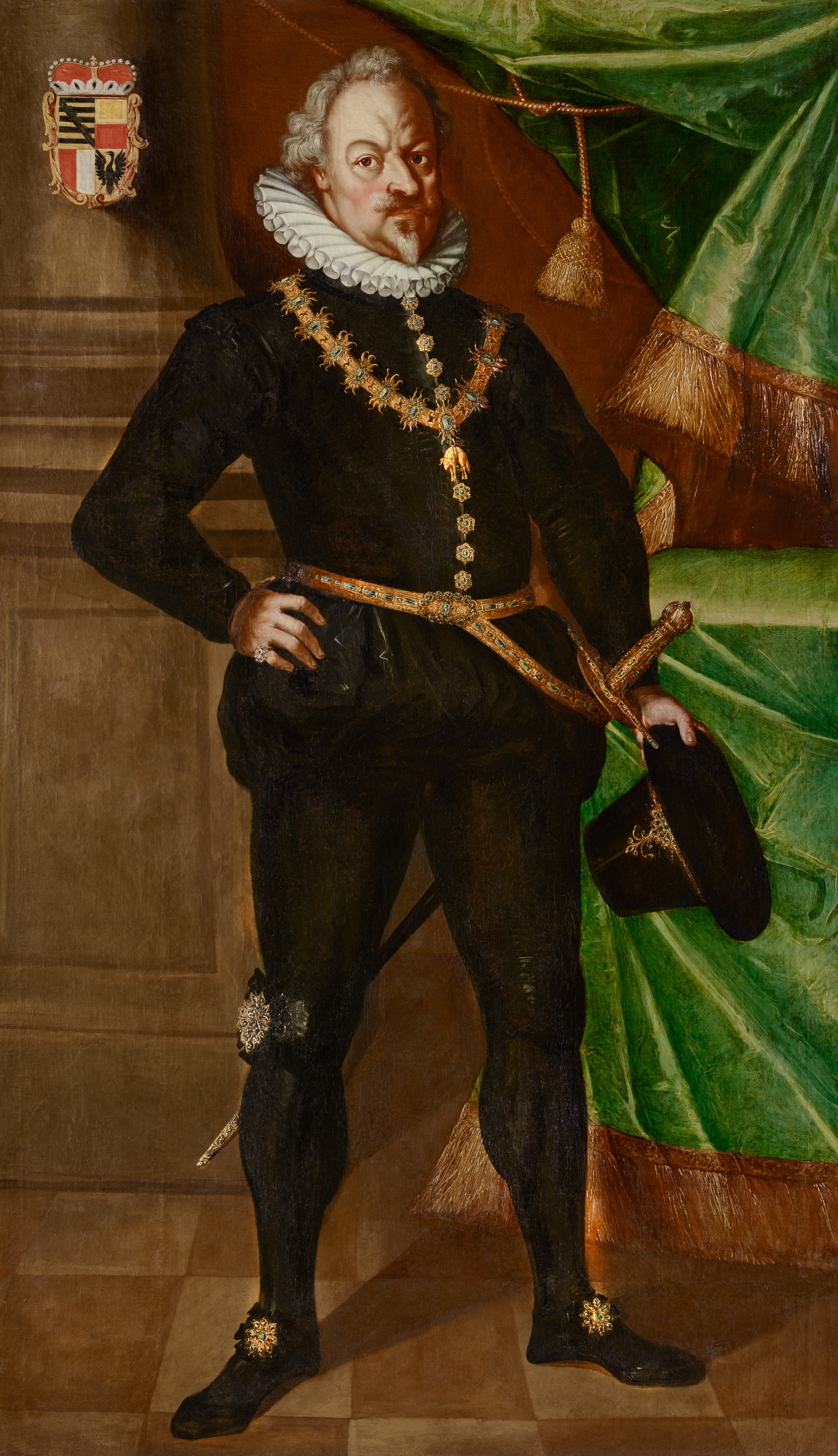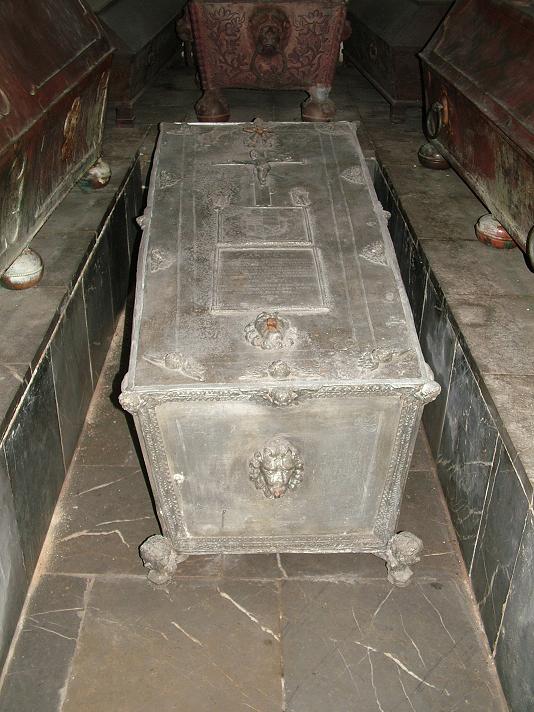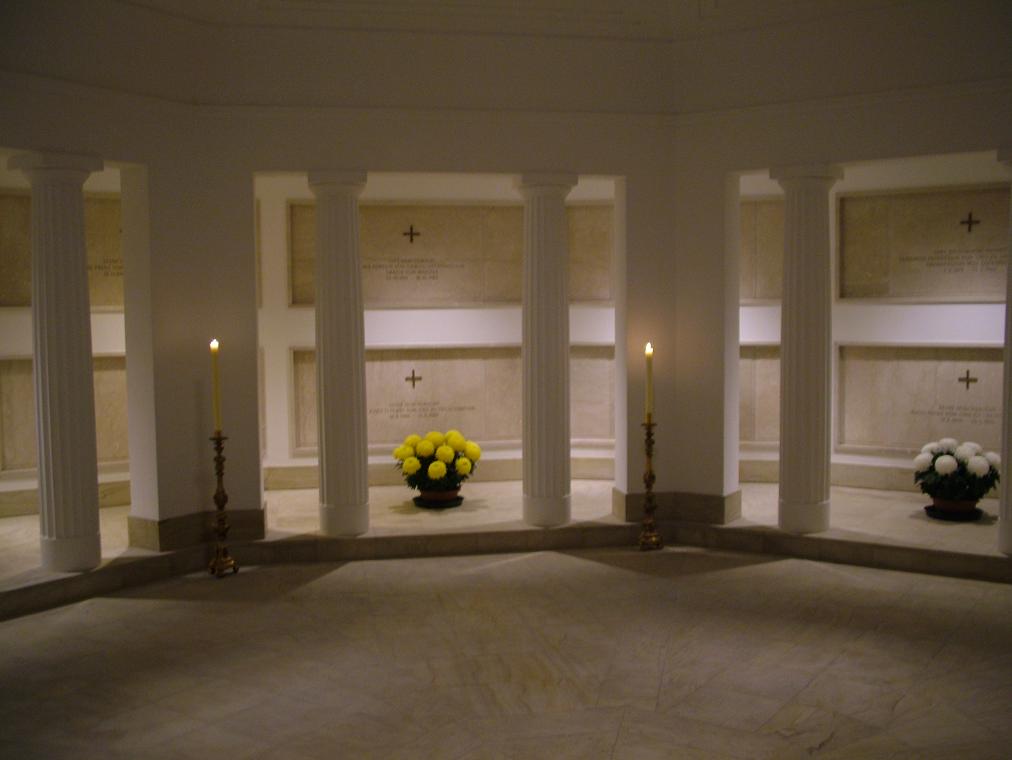by Susan Flantzer
© Unofficial Royalty 2021

Josef Johann Adam, Prince of Liechtenstein; Credit – Wikipedia
Josef Johann Adam, Prince of Liechtenstein was born in Vienna, Austria on May 27, 1690. He was the third but the only surviving son of the five sons and the fifth of the eleven children of Anton Florian, Prince of Liechtenstein and Countess Eleonore Barbara von Thun-Hohenstein.
Josef had ten siblings but six of his siblings did not survive childhood:
- Franz Augustin of Liechtenstein (1680 – 1681), died in infancy
- Eleonore of Liechtenstein (1681 -1682), died in infancy
- Antonia Maria Eleonore of Liechtenstein (1683 -1715), married (1) Count Johann Adam von Lamberg, no children (2) Count Maximilian von Kuefstein, had four children
- Karl Josef Florian of Liechtenstein (born and died 1685), died in infancy
- Anton Ignaz Josef of Liechtenstein (1689 – 1690), died in infancy
- Innocent Franz Anton of Liechtenstein (1693 – 1707), died in his teens
- Maria Karoline Anna of Liechtenstein (1694 – 1735), married Count Franz Wilhelm von Salm-Reifferscheidt, had one son
- Karl Josef (1697 – 1704), died in childhood
- Anna Maria Antonie of Liechtenstein (1699 – 1753), married her first cousin Josef Wenzel I, Prince of Liechtenstein, had five children who all died in childhood
- Maria Eleonore of Liechtenstein (1703 – 1757), married Friedrich August von Harrach-Rohrau, had ten children
Josef Johann Adam was married four times. See Unofficial Royalty: The Four Wives of Josef Johann Adam, Prince of Liechtenstein.
(1) Princess Maria Gabriele of Liechtenstein was born July 12, 1692, daughter of Hans-Adam I, Prince of Liechtenstein and Princess Edmunda Maria Theresia of Dietrichstein-Nikolsburg. She married her third cousin Josef Johann Adam on December 1, 1712. Gabrielle, aged 21, died due to childbirth complications on November 7, 1713. She was buried in the Old Crypt at Chuch of the Nativity of the Virgin Mary in Vranov, Moravia, now in the Czech Republic.
Josef Johann Adam and Gabrielle had one child who died in early childhood:
- Prince Karl Anton of Liechtenstein (1713 – 1715)
(2) Countess Marianne of Thun-Hohenstein was born on November 27, 1698. She was the daughter of Johann Maximilian Graf von Thun and Hohenstein and Maria Theresia Countess von Sternberg. On February 3, 1716, Marianne married Josef Johann Adam. Just three weeks after the marriage, on February 23, 1716, Marianne died in Vienna, Austria at the age of 17. She was buried in the Old Crypt at Chuch of the Nativity of the Virgin Mary in Vranov, Moravia, now in the Czech Republic.
(3) Countess Maria Anna Katharina of Oettingen-Spielberg was born September 21, 1693, in Vienna, Austria. She was the eldest of sixteen children of Count Franz Albrecht zu Oettingen-Spielberg and his wife Johanna Margaretha von Schwendt. Maria Anna Katharina married Josef Johann Adam on August 3, 1716, in Vienna, Austria. She died on April 15, 1729, at the age of 35, and was buried at the Parish Church of St. Nicholas at Glogów, in Silesia, now in Poland. The church was destroyed in 1945 and the tomb was not preserved.
Josef Johann Adam and Maria Anna Katharina had five children:
- Princess Maria Eleonore (1717 – 1718), died in infancy
- Prince Joseph Anton of Liechtenstein (1720 – 1723), died in childhood
- Princess Maria Theresia of Liechtenstein (1721 – 1753), married Joseph I Adam, 4th Prince of Schwarzenberg, had nine children
- Johann Nepomuk Karl, Prince of Liechtenstein (1724 – 1748), married Maria Josepha, Countess of Harrach-Rohrau, had three children
- Princess Maria Elisabeth Eleonore (born and died 1728), died on the day of her birth
(4) Born on May 12, 1707, Countess Maria Anna Kottulinska von Kottulin was the daughter of Franz Karl Kottulinsky, Baron von Kottulin and Krzizkowitz and Countess Maria Antonia von Rottal. Maria Anna and Josef Johann Adam were married on August 22, 1729, in Vaduz, Liechtenstein. After Josef Johann Adam died in 1732, Maria Anna married Count Ludwig Ferdinand von Schulenburg-Oeynhausen. Maria Anna, aged 80, died on February 6, 1788, in Vienna, Austria. She was buried at the Parish and Pilgrimage Church of the Visitation of Mary in Vienna, Austria but her tomb has not been preserved.
Josef Johann Adam and Maria Anna had two children who died in infancy:
- Prince Anton Thomas of Liechtenstein (1730 – 1731)
- Princess Maria Anna of Liechtenstein (1733 – 1734), born after her father’s death, died in infancy

Josef Johann Adam, circa 1710; Credit – Wikipedia
Josef Johann Adam served for a brief time in the army of the Holy Roman Empire under his father during the War of the Spanish Succession (1701 – 1714) and later fought against the French under John Churchill, 1st Duke of Marlborough. After the Treaty of Utrecht which ended the War of the Spanish Succession, Josef Johann Adam moved to Vienna and was appointed the imperial representative to the parliament of Moravia. He became the reigning Prince of Liechtenstein upon the death of his father Anton Florian, Prince of Liechtenstein on October 11, 1721. From 1723 he served as a member of the Imperial Privy Council, and in 1729, he chaired a meeting of the princely council of Silesia as a special representative of Holy Roman Emperor Karl VI.
Eventually, Josef Johann Adam retired from active politics to devote himself to the administration of his vast estates and the Principality of Liechtenstein which had been devastated by the debts left by his father. Despite pressure from within Liechtenstein, Josef Johann Adam refused to establish a more liberal government and continued with the absolutism of his father’s reign.

Church of the Nativity of the Virgin Mary in Vranov, Czech Republic: Credit – Von Ojin – Eigenes Werk, CC BY-SA 3.0, https://commons.wikimedia.org/w/index.php?curid=6438939
Josef Johann Adam died, aged 42, on December 17, 1732, in Valtice, Kingdom of Bohemia, now in the Czech Republic, and was buried in the Old Crypt at Chuch of the Nativity of the Virgin Mary in Vranov, Moravia, now in the Czech Republic. He was succeeded by his eight-year-old son Johann Nepomuk Karl. The former reigning Prince of Liechtenstein Josef Wenzel I served as regent and guardian for Johann Nepomuk Karl until he reached his majority in 1745. However, Johann Nepomuk Karl died without an heir three years later, and Josef Wenzel once again became the reigning Prince of Liechtenstein.
This article is the intellectual property of Unofficial Royalty and is NOT TO BE COPIED, EDITED, OR POSTED IN ANY FORM ON ANOTHER WEBSITE under any circumstances. It is permissible to use a link that directs to Unofficial Royalty.
Works Cited
- Century: 18th century. (n.d.). Retrieved from https://fuerstenhaus.li/en/die-biographien-aller-fuersten/18-century/
- Giuseppe Giovanni Adamo del Liechtenstein. (2021, November 05). Retrieved from https://it.wikipedia.org/wiki/Giuseppe_Giovanni_Adamo_del_Liechtenstein
- Joseph Johann Adam. (2021, August 14). Retrieved from https://en.wikipedia.org/wiki/Joseph_Johann_Adam































